If you’ve ever walked along a beach on the East Coast of North America or the shores of Southeast Asia, you may have stumbled upon what looks like a prehistoric throwback: a dark, helmet-shaped creature with a spiky tail, seemingly stranded by the tide. It’s easy to mistake it for a odd-looking rock or even a dangerous predator. But this animal, the horseshoe crab, is one of the most gentle, ancient, and astonishingly important creatures on our planet.
Despite its name, it isn’t a crab at all. It’s more closely related to spiders and scorpions, a living fossil that has been crawling ashore for hundreds of millions of years. They watched the dinosaurs arrive and vanish, and they’ve outlived countless extinction events. But today, this resilient survivor faces modern challenges, and its survival is inextricably linked to our own. This is the story of the blue-blooded guardian.
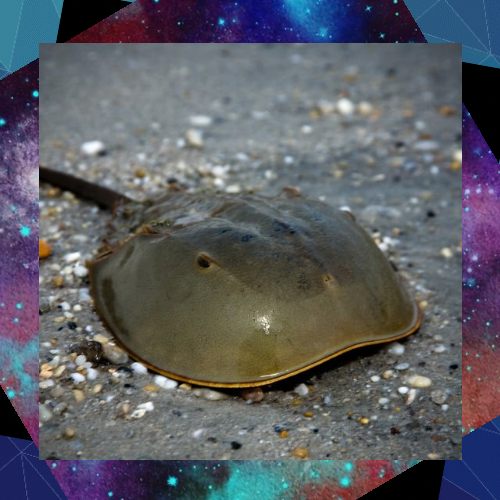
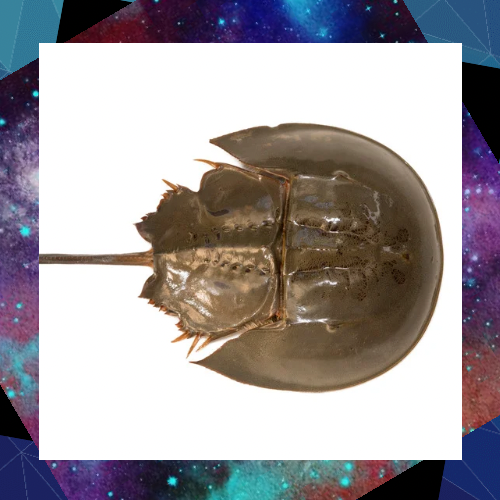
A Design Tested by Time: Anatomy of a Living Fossil
Horseshoe crabs are a masterpiece of evolutionary design. Their body is a fortress, divided into three main parts, all protected by a tough, hinged carapace (shell):
The Prosoma (head): This is the large, helmet-shaped front section. Its curved design is perfect for plowing through sediment and righting itself if flipped over by a wave. On top, you’ll find two striking compound eyes capable of detecting UV light, and on the underside, a mouth surrounded by bristly legs. But their most fascinating visual feature? Two simple eyes, called photoreceptors, on their tail (telson)! These help them synchronize their spawning with the cycles of the moon.
The Opisthosoma (abdomen): This middle section is like a Swiss Army knife. It houses most of the biological machinery, including the gills—book gills, to be exact. These are flappy structures that not only allow them to breathe underwater but also function as paddles for swimming!
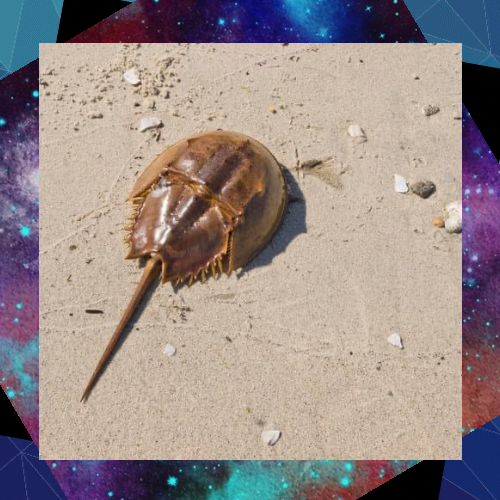
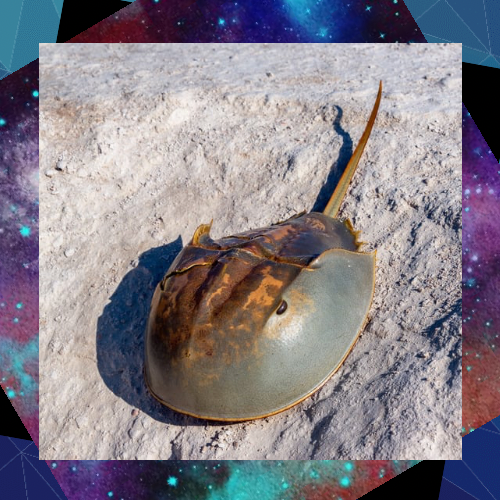
The Telson (tail): The most misunderstood feature. That long, scary-looking spike is not a weapon. It’s not a stinger and it’s not venomous. The horseshoe crab uses it primarily as a rudder for steering and, most importantly, as a lever to flip itself right-side-up if it gets overturned by a wave. Think of it as a built-in emergency self-righting tool.
A Fun Fact: Horseshoe crabs have ten eyes! In addition to the two compound eyes and the two photoreceptors on the tail, they have several light-sensing organs along their body. They are essentially walking sensory machines, perfectly tuned to their environment.
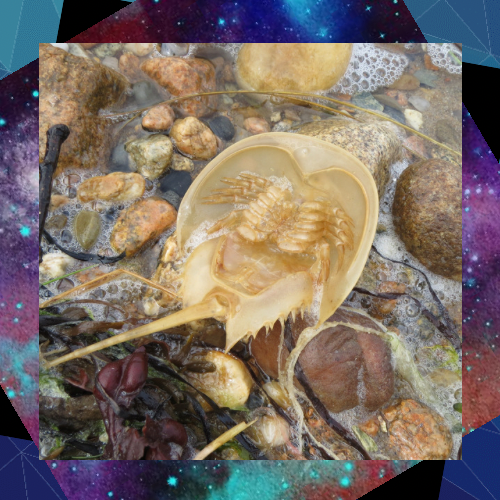
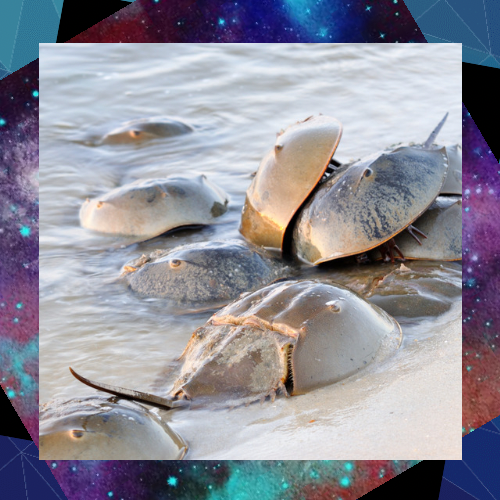
The Great Annual Romance: A Moonlit Spectacle
One of the most spectacular wildlife events in North America is the horseshoe crab spawn. Each spring, during the high tides of the new and full moons, hundreds of thousands of horseshoe crabs emerge from the sea and descend upon beaches from Maine to Mexico.
The males arrive first, clustering in the shallows. When the larger females arrive, the males use a special modified pair of claws to latch onto the female’s shell, forming a “train” of suitors. The female then crawls ashore, digs a nest in the sand, and deposits clusters of tiny, greenish eggs. The males following her fertilize the eggs externally.
This event doesn’t just ensure the next generation of horseshoe crabs; it’s a critical ecological party. The eggs are a vital food source for hundreds of thousands of migrating shorebirds. Species like the red knot, a bird that flies from the tip of South America to the Arctic, time their migration perfectly with this spawn. They feast on the eggs, doubling their body weight in a matter of weeks, fueling the final leg of their incredible journey. The survival of these birds is directly tied to the success of the horseshoe crab spawn.
Liquid Gold: The Blue Blood That Saves Millions
This is where the horseshoe crab’s story moves from fascinating to life-saving. Their value extends far beyond the beach and into the very heart of modern medicine.
Horseshoe crabs have a primitive immune system. Instead of white blood cells to fight infection, they rely on specialized cells called amebocytes. These cells are incredibly sensitive to pathogenic bacteria like E. coli and Salmonella. When they detect even the tiniest amount of endotoxin (a dangerous substance released by these bacteria), they immediately clot, forming a gel-like seal around the threat to prevent the infection from spreading.
This superpower is the basis for the Limulus Amebocyte Lysate (LAL) test. Since the 1970s, every single injectable drug, vaccine, and implanted medical device (think IV drips, chemotherapy drugs, insulin, and even the COVID-19 vaccines) must be tested for bacterial contamination using LAL. It is the global gold standard, the most sensitive test we have, and there is no synthetic equivalent that works as well.
So, how do we get it? The pharmaceutical industry practices a strictly regulated biomedical bleeding process. Horseshoe crabs are collected, carefully transported to labs, where a portion of their blood is drawn, and then they are returned to the ocean, often within 72 hours. The amazing blue color comes from hemocyanin, a copper-based molecule they use to carry oxygen (unlike our iron-based, red hemoglobin).
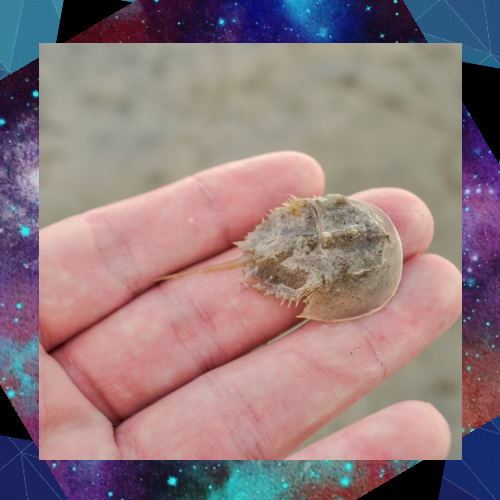
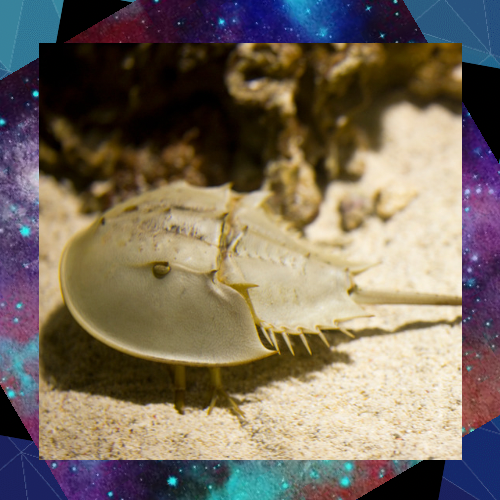
A Piece of Trivia: Horseshoe crab blood is so valuable that it’s estimated to be worth $15,000 per quart, making it one of the most expensive liquids on Earth.
Challenges and The Path to Conservation
The biomedical bleeding process is done with care, but studies have shown that it is not without cost. An estimated 10-15% of crabs do not survive the process, and survivors can often be disoriented and less active, potentially affecting their ability to spawn.
Beyond biomedical harvesting, horseshoe crabs face other severe threats:
- Habitat Loss: Coastal development is destroying their crucial spawning beaches.
- Use as Bait: They are heavily harvested as bait for eel and whelk fisheries.
- Climate Change: Rising sea levels and warming waters threaten their breeding habitats and food sources.
The combination of these pressures has led to population declines, particularly for the American horseshoe crab (Limulus polyphemus).
The good news is that incredible work is being done. Conservationists are:
- Promoting Synthetic Alternatives: Research into a recombinant Factor C (rFC) test, a synthetic version of the LAL test, is ongoing and is already approved for use in some regions. Widespread adoption would significantly reduce the reliance on wild crabs.
- Habitat Protection: Organizations are working to identify and protect key spawning beaches.
- Public Education: Teaching beachgoers how to gently help overturned crabs back into the water (always by the sides of the shell, never the tail) can save countless lives.
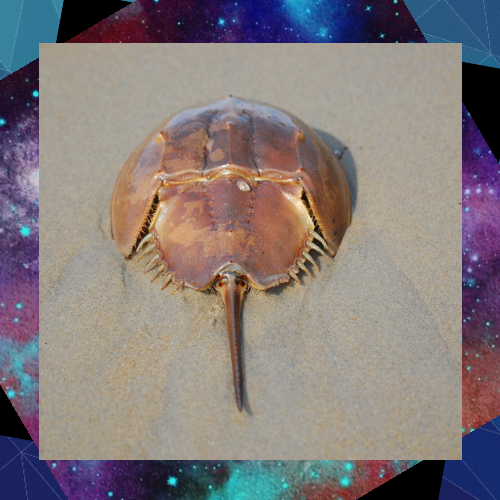
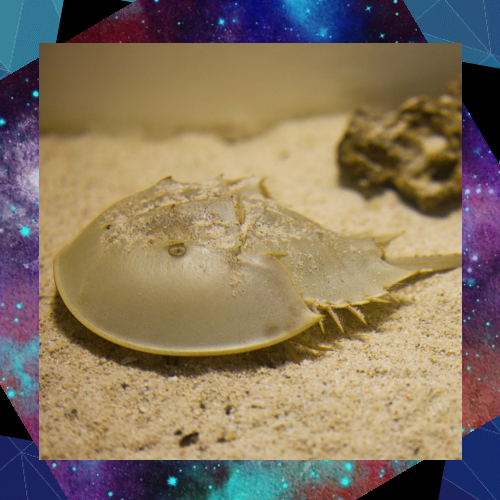
Our Ancient Ally
The horseshoe crab is a paradox: an ancient creature that is vitally modern, a denizen of the ocean floor that is a guardian of human health. They are not monsters to be feared, but marvels to be respected and protected.
Their story is a powerful reminder that the threads of nature are woven together in a delicate, intricate web. The fate of a red knot bird in the Arctic is tied to the fate of a crab on a beach in Delaware, which is, in turn, tied to the safety of medicine in hospitals around the world. By protecting the ancient, blue-blooded horseshoe crab, we are ultimately protecting ourselves and the rich, biodiverse world we share.
References & Further Reading:
- Atlantic States Marine Fisheries Commission (ASMFC). https://asmfc.org/species/horseshoe-crab/
- National Oceanic and Atmospheric Administration (NOAA) Fisheries. (2023). Horseshoe Crab. https://www.fisheries.noaa.gov/feature-story/horseshoe-crabs-managing-resource-birds-bait-and-blood
- The Ecological Research & Development Group (ERDG). (2023). The Horseshoe Crab. https://horseshoecrab.org
- Maloney, T., et al. (2018). https://pubmed.ncbi.nlm.nih.gov/24445440/
- Hurton, L., et al. (2005). An estimation of the mortality of the American horseshoe crab (Limulus polyphemus) during the biomedical bleeding process. https://spo.nmfs.noaa.gov/sites/default/files/pdf-content/2006/1042/hurton.pdf
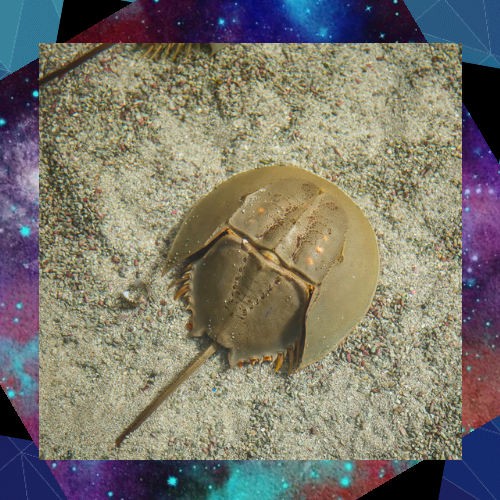


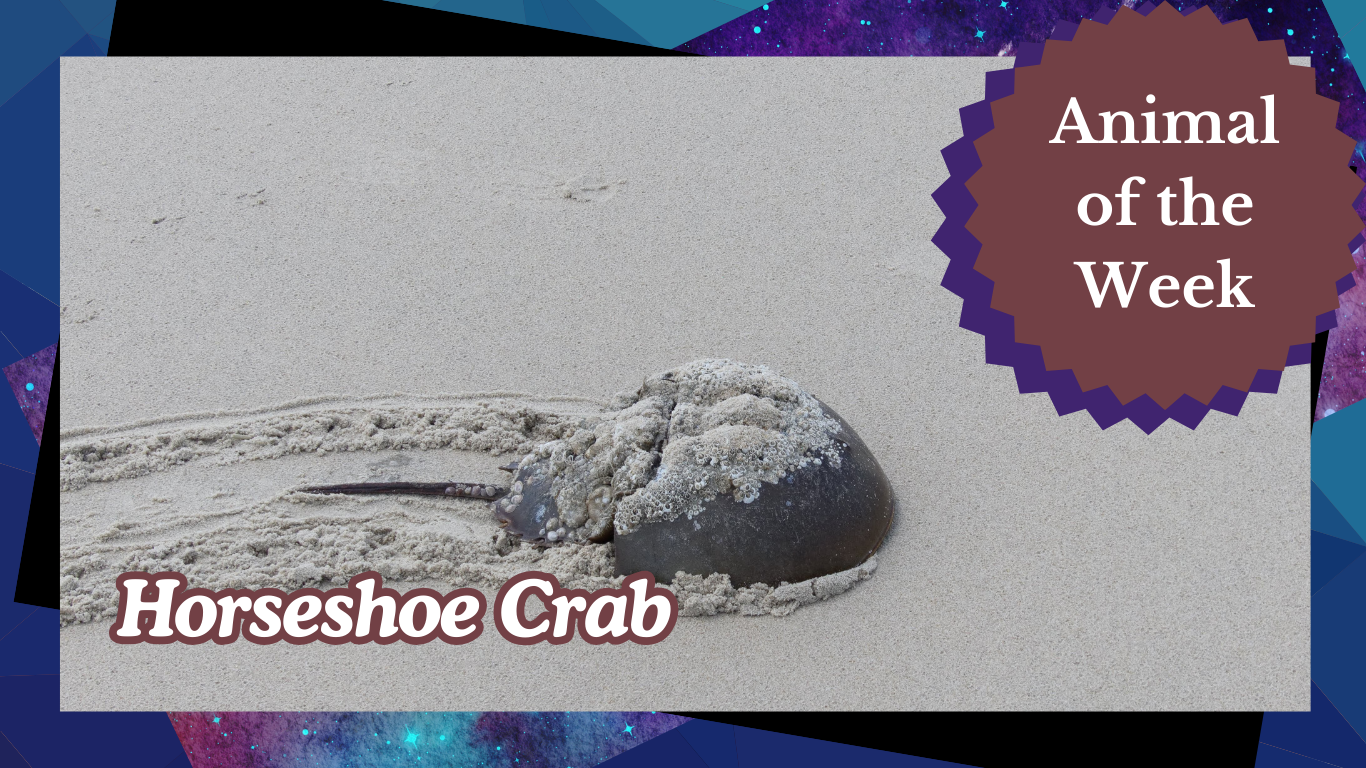


Its like you read my mind You appear to know so much about this like you wrote the book in it or something I think that you can do with a few pics to drive the message home a little bit but other than that this is fantastic blog A great read Ill certainly be back
Thank you for the auspicious writeup It in fact was a amusement account it Look advanced to more added agreeable from you By the way how could we communicate
Your blog is a beacon of light in the often murky waters of online content. Your thoughtful analysis and insightful commentary never fail to leave a lasting impression. Keep up the amazing work!
Your blog is a shining example of excellence in content creation. I’m continually impressed by the depth of your knowledge and the clarity of your writing. Thank you for all that you do.
I’ve been following your blog for quite some time now, and I’m continually impressed by the quality of your content. Your ability to blend information with entertainment is truly commendable.
Your passion for your subject matter shines through in every post. It’s clear that you genuinely care about sharing knowledge and making a positive impact on your readers. Kudos to you!
Your writing is like a breath of fresh air in the often stale world of online content. Your unique perspective and engaging style set you apart from the crowd. Thank you for sharing your talents with us.
Somebody essentially help to make significantly articles Id state This is the first time I frequented your web page and up to now I surprised with the research you made to make this actual post incredible Fantastic job
Your blog is a constant source of inspiration for me. Your passion for your subject matter shines through in every post, and it’s clear that you genuinely care about making a positive impact on your readers.
Simply wish to say your article is as amazing The clearness in your post is just nice and i could assume youre an expert on this subject Well with your permission let me to grab your feed to keep updated with forthcoming post Thanks a million and please carry on the gratifying work
Thank you for the auspicious writeup It in fact was a amusement account it Look advanced to more added agreeable from you By the way how could we communicate
Hello my loved one I want to say that this post is amazing great written and include almost all significant infos I would like to look extra posts like this
Your blog has quickly become one of my favorites. Your writing is both insightful and thought-provoking, and I always come away from your posts feeling inspired. Keep up the phenomenal work!
Hey there You have done a fantastic job I will certainly digg it and personally recommend to my friends Im confident theyll be benefited from this site
Your passion for your subject matter shines through in every post. It’s clear that you genuinely care about sharing knowledge and making a positive impact on your readers. Kudos to you!
I am not sure where youre getting your info but good topic I needs to spend some time learning much more or understanding more Thanks for magnificent info I was looking for this information for my mission
Your ability to distill complex concepts into digestible nuggets of wisdom is truly remarkable. I always come away from your blog feeling enlightened and inspired. Keep up the phenomenal work!
Your blog is a testament to your expertise and dedication to your craft. I’m constantly impressed by the depth of your knowledge and the clarity of your explanations. Keep up the amazing work!
Your blog is a shining example of excellence in content creation. I’m continually impressed by the depth of your knowledge and the clarity of your writing. Thank you for all that you do.
Thank you for the auspicious writeup It in fact was a amusement account it Look advanced to more added agreeable from you By the way how could we communicate
pirinç merdiven korkuluk
I think this is one of the most significant information for me.
And i am glad reading your article. But want to remark on few general things, The web site style is perfect, the articles is really great : D.
Good job, cheers
Thank you for the auspicious writeup It in fact was a amusement account it Look advanced to far added agreeable from you However how can we communicate
Somebody essentially lend a hand to make significantly posts I might state That is the very first time I frequented your web page and up to now I surprised with the research you made to create this particular put up amazing Excellent job
Your blog is a constant source of inspiration for me. Your passion for your subject matter is palpable, and it’s clear that you pour your heart and soul into every post. Keep up the incredible work!
Normally I do not read article on blogs however I would like to say that this writeup very forced me to try and do so Your writing style has been amazed me Thanks quite great post
I just could not leave your web site before suggesting that I really enjoyed the standard information a person supply to your visitors Is gonna be again steadily in order to check up on new posts
Your blog is a breath of fresh air in the often mundane world of online content. Your unique perspective and engaging writing style never fail to leave a lasting impression. Thank you for sharing your insights with us.
Your writing is a true testament to your expertise and dedication to your craft. I’m continually impressed by the depth of your knowledge and the clarity of your explanations. Keep up the phenomenal work!
I do not even know how I ended up here but I thought this post was great I do not know who you are but certainly youre going to a famous blogger if you are not already Cheers
I do agree with all the ideas you have introduced on your post They are very convincing and will definitely work Still the posts are very short for newbies May just you please prolong them a little from subsequent time Thank you for the post
Well I really liked reading it. This tip offered by you
is very helpful for correct planning.
Excellent, what a weblog it is! This blog presents useful information to us, keep it up.